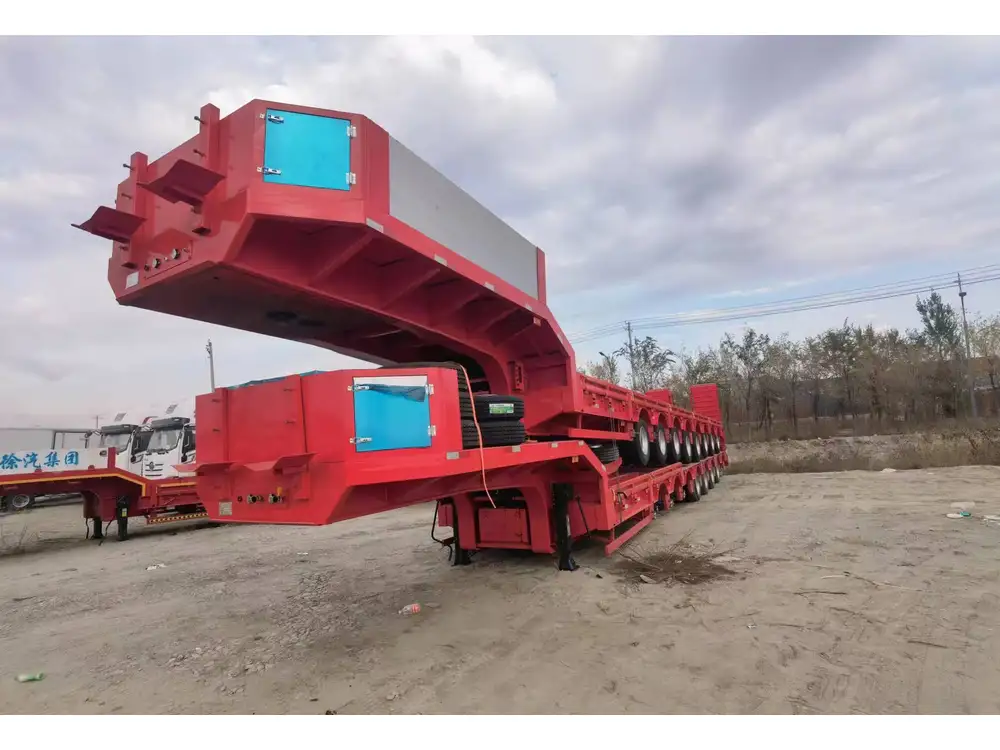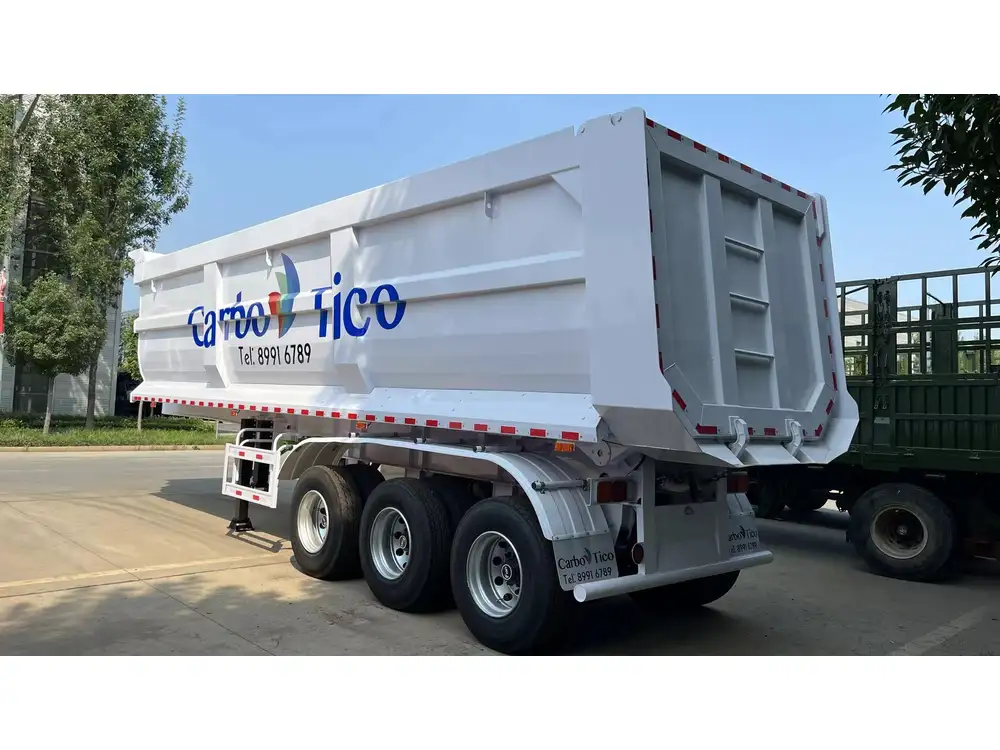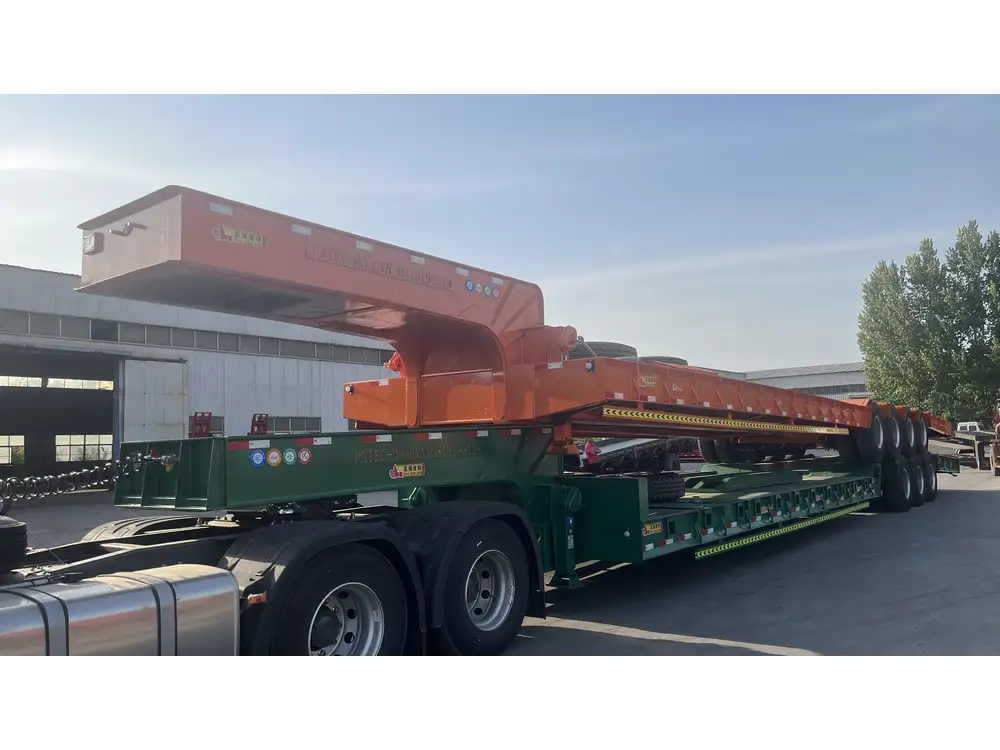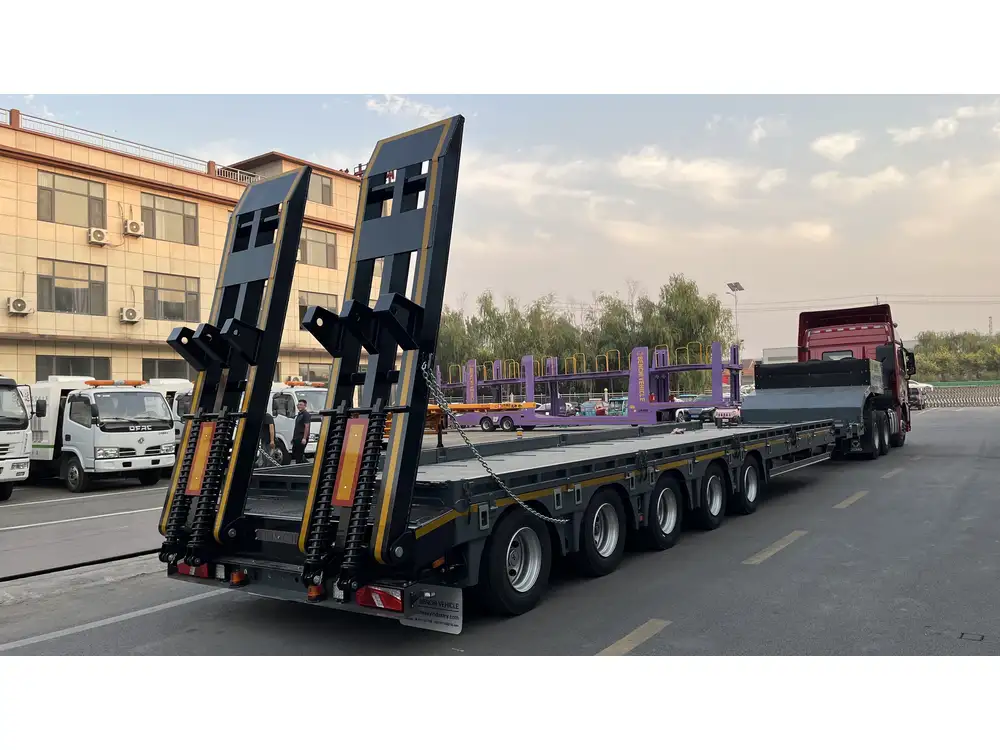Understanding the Engineering Marvel
The phenomenon of cars being transported under semi-trailers presents not only a captivating visual but also an engineering feat that raises numerous questions. How do manufacturers design these semi-trailers to accommodate vehicles underneath? What safety measures are implemented to ensure stability and security? In this article, we will explore the intricate details, methodologies, and innovations that characterize this impressive logistics operation.
The Design Considerations of Semi-Trailers
When conceptualizing semi-trailer designs that allow for the transportation of cars underneath, several key considerations come into play.
| Factor | Description |
|---|---|
| Weight Distribution | Achieving an optimal weight distribution is crucial to maintain balance during transit. |
| Dimensions | The height and width of the semi-trailer must be meticulously calculated to fit vehicles safely. |
| Material Strength | The materials used need to support substantial weight without compromising durability. |
| Aerodynamics | Streamlined designs can reduce drag and improve fuel efficiency when transporting cars. |

Weight Distribution
Achieving balance is paramount. The weight of vehicles being transported can easily alter the center of mass, potentially leading to stability issues. Manufacturers often employ advanced computer simulations to analyze load distributions and mitigate tipping hazards.
Dimensions
The available height between the ground and the trailer plays a significant role. Most passenger vehicles need considerable clearance; thus, a specialized lower deck can facilitate transport. Calculating vehicle dimensions ensures that they will fit securely beneath the trailer without causing damage.
Material Strength
Semi-trailers are engineered with materials such as high-strength steel or aluminum alloys, providing a combination of lightweight and sturdy frameworks. This choice of materials is crucial to support the weight of vehicles while ensuring longevity and performance.

Aerodynamics
An overlooked aspect in trailer design is aerodynamics. By minimizing drag, manufacturers can improve fuel efficiency. Innovative designs featuring sloped surfaces, curved edges, and spoilers contribute to reducing air resistance.
Safety Protocols in Transporting Vehicles Underneath
Ensuring safety is of utmost priority during transport operations. Several protocols and mechanisms are in place.
| Safety Measure | Description |
|---|---|
| Fastening Systems | Specialized equipment secures vehicles to prevent movement. |
| Weight Sensors | Intelligent sensors alert operators to potential weight issues. |
| Regular Inspections | Pre- and post-transport inspections ensure compliance and safety. |
Fastening Systems
To keep vehicles securely in place, operators utilize a combination of straps, chocks, and restraints. Innovative tethering solutions provide added security during transit, reducing the risk of accidents or damage.

Weight Sensors
Modern semi-trailers are equipped with weight sensors that communicate load information to the driver in real-time. If the load exceeds safe thresholds, alerts can trigger to prevent overloading.
Regular Inspections
Regular inspections before and after transport are critical. Checking for wear and tear, ensuring all fastening systems are operational, and adhering to safety regulations are integral parts of the process.
The Loading and Unloading Process
The logistics of loading and unloading vehicles can be complex, requiring a systematic approach.
| Step | Description |
|---|---|
| Preparation | Ensure the area is clear, and all necessary equipment is available. |
| Loading | Use ramps or hydraulic lifts for smooth vehicle entry beneath the trailer. |
| Securing Load | Once loaded, utilize appropriate fastening systems to keep the vehicle stable. |
| Unloading | Employ reverse procedures to safely remove vehicles without risk of accidents. |

Preparation
Prior to loading, adequate planning is essential. This involves checking surface conditions, ensuring equipment functionality and gathering necessary tools.
Loading
Utilizing ramps or hydraulic systems allows for a seamless transition of vehicles beneath the trailer. It’s vital to position equipment correctly to avoid scraping or damaging the vehicle.
Securing Load
After loading, the vehicle must be secured properly. This involves checking every fastening mechanism to guarantee the vehicle will not shift during transit.

Unloading
Unloading requires careful coordination. By reversing the loading process, operators can mitigate risks involved with offloading, ensuring all vehicles are safely removed without incident.
Innovations Enhancing the Transportation Method
The world of logistics is always evolving. Recent technological advancements have influenced how semi-trailers transport cars.
- Automated Loading Systems: Automation in loading helps minimize human error and speeds up the unloading process.
- Smart Tracking Systems: GPS and tracking systems allow transport companies to monitor vehicles in real-time, providing data on location and safety.
- Telematics: Real-time analytics regarding vehicle conditions during transport enhance decision-making, ensuring optimal operation.
Automated Loading Systems
The advent of automated systems drastically improves the efficiency and safety of loading operations. By integrating robotics into the process, companies can significantly reduce the time spent loading cars underneath semi-trailers.

Smart Tracking Systems
With the implementation of GPS systems, monitoring vehicles becomes effortless. Stakeholders can access real-time data on the vehicle’s location, condition, and route—minimizing anxiety over the safety of transported goods.
Telematics
Telematics takes it a step further, providing data about not only vehicle location but also monitoring tire pressure, engine health, and other critical metrics. This technology assists operators in proactively managing maintenance and ensuring the vehicles arrive at their destination in optimal condition.
Overcoming Challenges in Semi-Trailer Transportation
Despite the sophisticated technology and methods in play, challenges are inevitable. Addressing these challenges effectively is essential to maintaining high standards in vehicle transport.
| Challenge | Solution |
|---|---|
| Weight Variability | Implement dynamic weight distribution tools to adapt in real-time. |
| Weather Conditions | Utilize weather-resistant materials and deploy adaptive scheduling. |
| Compliance Issues | Conduct regular training sessions on regulatory changes for operators. |

Weight Variability
Potentials for weight variability among vehicles are mitigated through the use of dynamic distribution tools. These systems allow for real-time adjustments to maintain balance during transport.
Weather Conditions
Adverse weather can pose threats to transportation safety. Employing weather-resistant materials helps protect the vehicles, while adaptive scheduling can prevent transport during extreme conditions.
Compliance Issues
Transport regulations are ever-changing. To remain compliant, frequent training for all personnel ensures they’re updated on the latest requirements, thus reducing the risk of violations during operations.

The Future of Semi-Trailer Transport
As the transportation industry evolves, intriguing advancements are on the horizon that promise even more efficient and secure methods for car transport under semi-trailers.
- Electric and Alternative Fuels: As sustainability becomes a priority, the shift to electric and alternative fuel semi-trailers is becoming a significant trend.
- Autonomous Delivery Systems: The development of autonomous semi-trailers has the potential to revolutionize logistics, allowing for safer and more efficient routes.
- IoT Connectivity: The Internet of Things (IoT) will further enhance transport logistics, providing data-driven insights into operational efficiencies and vehicle conditions.
Electric and Alternative Fuels
As the global conversation shifts towards sustainability, manufacturers are investing in technologies that allow semi-trailers to run on electricity or alternative fuels. These innovations promise not only to reduce carbon footprints but also to lower operational costs.
Autonomous Delivery Systems
The prospect of autonomous semi-trailers is not just a dream; it’s becoming a reality. With advancements in robotics and artificial intelligence, the future of logistics is expected to include vehicles that can drive themselves, minimizing human error and maximizing safety.

IoT Connectivity
By embedding IoT technologies into semi-trailers, manufacturers can achieve unparalleled data collection and operational intelligence. Monitoring systems will allow companies to optimize routes and reduce downtime, enhancing overall efficiency.
Conclusion
The transport of vehicles under semi-trailers is emblematic of modern engineering and logistical prowess. From intricate design considerations to state-of-the-art innovations, every aspect plays a crucial role in ensuring safe and effective transport. As we continue to advance technologically, the methods of shipping vehicles will only become more sophisticated, addressing emerging challenges while responding to the ever-changing dynamics of the industry.
The forthcoming era is one of excitement and potential, where the convergence of innovation and compliance promises to shape a safer and more efficient future for semi-trailer transport. Understanding these intricate systems can empower manufacturers and transporters alike to enhance their operations, ultimately leading to higher customer satisfaction and operational excellence.



